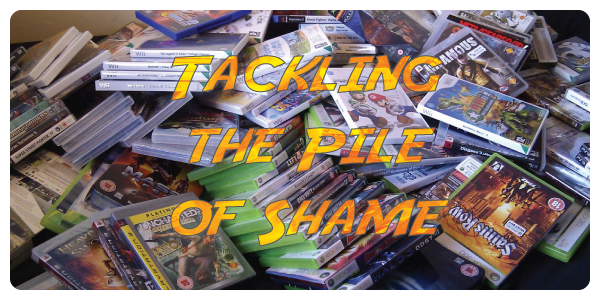
Deal with the devil
As I mentioned in my previous post, I intend to limit my gaming library to just eight games for one year. This is to fully explore the games I already own and to try to put the brakes on purchasing more games.
After much consideration, I think this is going to be too tricky to actually do. So I’m going to add some amendments to what should have been a rather simple premise. Here are the rules that I’ll stick to from 1 July 2017 until 30 June 2018.
- I will choose up to eight games to play across all consoles during the next year. I don’t need to choose all eight games initially and can add in titles to empty slots later in the year.
- I will exempt anything that isn’t really classed as a game. The main things that fall into this category are VR-type experiences. This does not mean that games such as Skyrim PSVR would be exempt, anything that I determine is a game has to go in a slot.
- I will exclude multiplayer titles that I would otherwise only play with the kids (Lego Dimensions, Mario Kart 8, etc). But on the flipside, I can’t play these titles on my own and we can only play games we already own. If I want to buy something else then that has to be one of the eight choices. I think that’s a fair compromise.
- If I get the platinum trophy, then I can swap that game for something else. But this only applies to PS4/PS3 games where completing a game 100% can be easily measured. Once a game has been swapped out though then it’s gone for the rest of the year.
- There is no restriction on the purchase of DLC for existing titles.
- I’m wrestling with rules six a little. I was considering adding a rule that means I can add an extra choice once I’ve platinumed five games. But I also feel that goes against the spirit of what I’m doing. But looking at my choices, the chances of me getting a platinum on two games, let alone five, is so remote as to not worth bothering with. What do you think?
- This rule is called my ‘I might want to buy a Switch’ rule. This rule states that I can play any of my choices on any format it’s been released on. So if I pick Stardew Valley then I get to play that on PS4 or Vita (hopes) or whatever.
Choices, choices…..
Now comes the tricky part, what do I choose for my eight games? To get a flavour of the pool of games I’ve got to pick from, here are some pics of my library. I’ve also got a smattering of PS Vita and 3DS games.



The final eight
So what made the final cut? Well, before I name the lucky picks, I’m going to say that two slots are being left open. One is almost certainly for Everybody’s Golf on PS4. I’m confident it’s going to be a great game, and if I don’t buy it then I can’t run a GRcade tournament. The other slot is either for Skyrim PSVR or any other surprise title (Ace Combat on VR looks mighty interesting). On that basis, I’ve got just six left to pick. 🙁
- Horizon Zero Dawn (PS4)
Only recently acquired but is currently hogging my PS4 time. I’m about 10 hours in but it feels like I’ve barely scratched the surface and I’m also looking forward to the DLC. - Monster Hunter 4 Ultimate (3DS)
I was initially going to include my absolute favourite Monster Hunter title in my selection – Monster Hunter Freedom Unite on Vita. But I’ve had MH4U kicking about for a year or so and barely played it whereas MHFU has had 100s of hours gone into it. I love MH games and this seemed like a great way to dust off something from the shelf. It’s also my only portable game so I’d better like it! - Stardew Valley (PS4)
Taking a break from this at the moment due to HZD but I can’t imagine not being able to play it. It has to be in the selection. Rule seven was created specifically with this in mind, portable Stardew Valley would be astounding. - The Legend of Zelda: Breath of the Wild (Wii U)
I’ve hardly touched this game after picking it up at launch. I’ll need a palate cleanser before diving in after playing a lot of HZD but I’m excited to go back to it sometime later this year. It’s also the other reason for rule seven. - Resident Evil 7 (PS4)
I bought a PSVR because I’m weak and I also like buying peripherals that’ll sit in a drawer until the end of time. So I need something to play on it to justify the outrageous cost. I bought Resi 7 and tried to play it on VR but it was too scary. I need to grow a backbone and get stuck in. It’s also one that is relatively easy to platinum (I think). - The Witcher 3: Wild Hunt (PS4)
I’m a reasonable way into this but haven’t got round to the DLC yet (which I also own), and haven’t touched it for well over a year.
I think this gives me a reasonable mix but is probably leaning more towards big, open world games. Nothing bite-sized which may come back to haunt me. By the time this gets posted then I’ll be into the year. I’ll attempt to post along the way, but you know how these things go (abandoned by Christmas).


